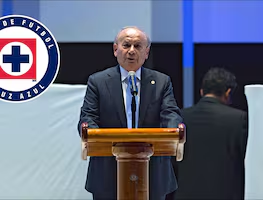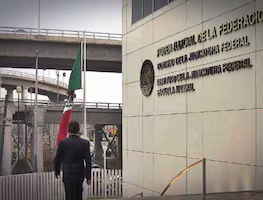Más Información

Hay “conversaciones estratégicas” con equipo de Trump, afirma Esteban Moctezuma; presume acudir a investidura

ONGs acusan a Garduño de eludir responsabilidad en incendio de INM de Ciudad Juárez; exigen justicia por 40 migrantes

Vinculan a proceso a “Billy” Álvarez por lavado y liderar grupo delictivo; exdirector de Cruz Azul continúa en prisión

Reciben como héroes en Saná a marinos veracruzanos secuestrados por rebeldes hutíes; permanecieron cautivos 430 días
Social programs
to eradicate poverty and inequality have been part of government plans for decades. For the current administration, social programs represent one of the pillars of its government plan . The main program is financial aid for the elderly, followed by a program that will provide MXN $3,600 per month to young people between 18 and 29 years old for a year, in order for them to be trained and develop abilities to join the workforce .
The scenario portrayed by these projects is always described as ideal but the reality is always quite different.
For example, in the Naucalpan municipality, located in the State of Mexico , the owners of tortillerías, butcheries , and informal businesses are training the youth. They train and use the workforce , while the federal government provides financial aid to the young people who are part of the program.
Is this the best way to help the youth who couldn't continue their education and that can't find job opportunities because of their lack of knowledge?
With no intention to belittle commerce , it seems contradictory that in a municipality with i ndustrial potential, such as Naucalpan, which could offer training for more skilled trades , focuses on small businesses . Until May 9, Naucalpan registered over 1,000 work centers for the youth but 70% are small businesses .
In the program's website , the user can find phrases such as “Start your journey to success ” and “Your talent is the Fourth Transformation's driving force.” In a video, the government invites companies, workshops, institutions, and social organizations to join the program and become “ tutors .” It never mentions small businesses and i nformal commerce .
When the program is evaluated for the first time, it will be necessary to review the relevance of including a street vendor as a tutor, as well as follow up the young people who were granted financial aid and training to detect if they were able to join the workforce . This information will be key to evaluate if the program was successful or not.
Youth Building the Future
focuses on an important sector of Mexican society , as 22% of them don't study, work, or train . The financial aid that is granted for a year should be a tool used for a dignified future , that helps to prevent the possibility of antisocial behaviors and join the workforce. The training they receive will be reflected in their life. If the training is more specialized and has better quality, the benefit will be better.
gm







